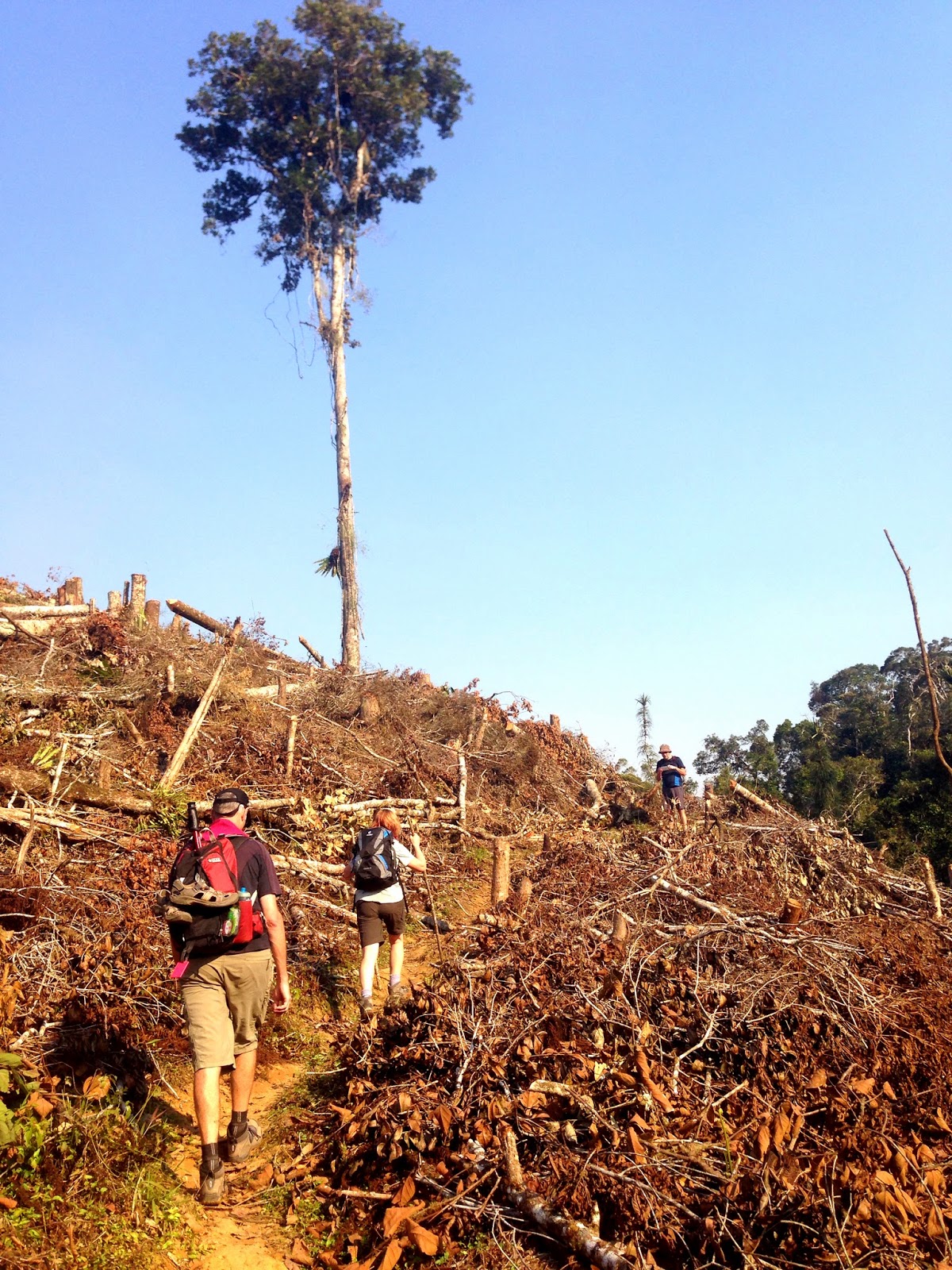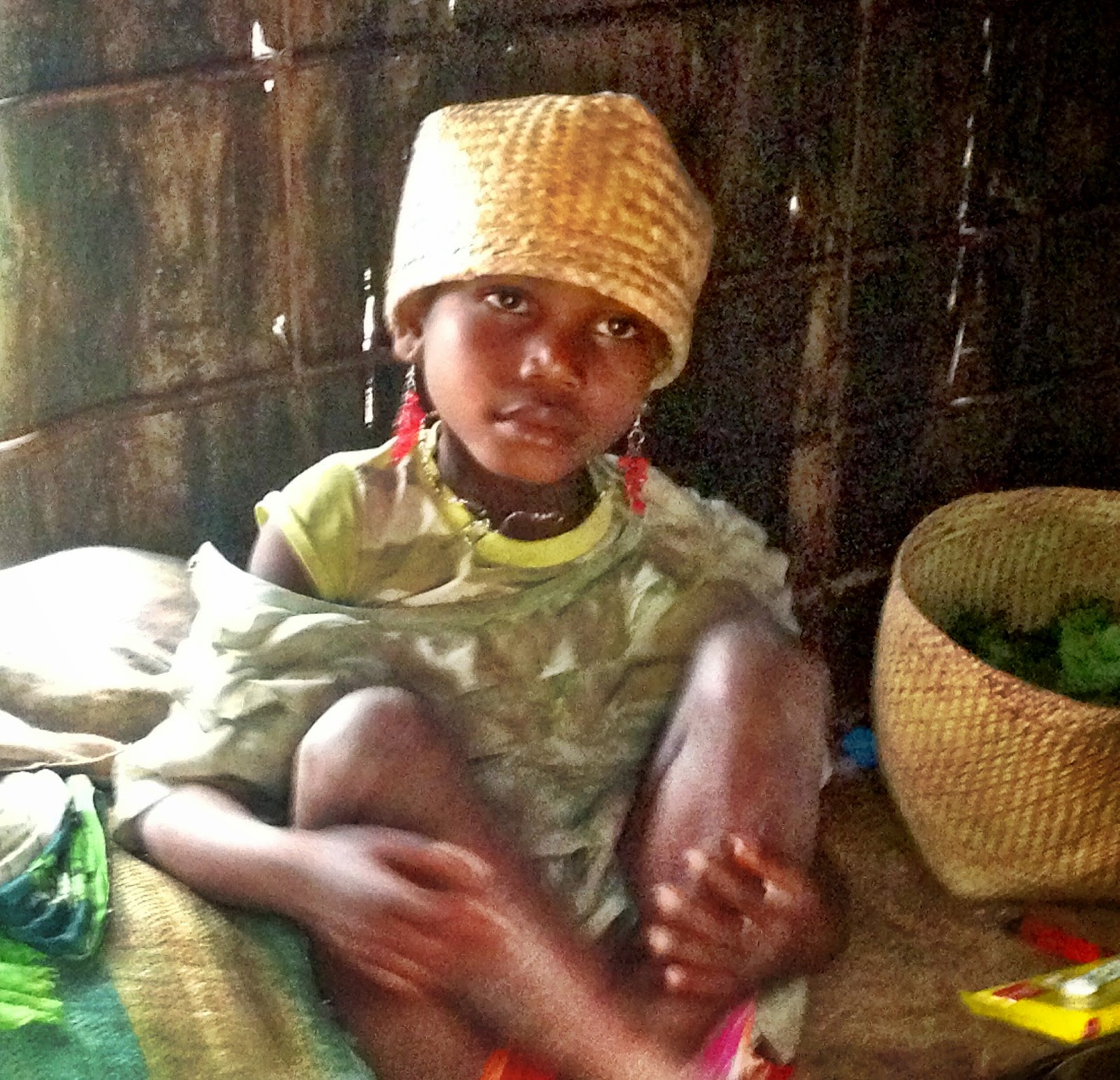 |
| UNDER THE TARP- SMOKE WAS EVERYWHERE |
DOUBLE CICK TO ENLARGE IMAGE:
It was the 3rd day of trekking on our East coast Madagascar adventure and we had been zig zagging up a mountainside for 4 hours, as we rested under the tarp to get out of the oppressive heat, we looked to our right and was startled to see flames shooting up, to our disbelief the
"Firestarter" had ignited the forest all around us............ see below
 |
| LEAF TAIL CHAMELEON |
 |
| REGGIE, LIAM, ME, JOHN, JAY IN FRONT |
 |
| TREE BOA |
PRE- TREK: We met up with our new Irish traveling companions: Reggie and her 13 year old son Liam, and started off on our next leg. First we stopped at a
Reptilian farm that had an assortment of rain forest critters:
 |
| PEARSON'S CHAMELEON |
 |
| COMET MOTH |
THE INDRI LEMURS: From our rain forest lodge u could hear the calls of the
Indri lemur, by far the coolest lemurs. The largest of all the lemurs, they weigh upwards of 10kg (18-30) lbs., they have no tails and can leap 10 meters (30 feet) through the air. Their territorial and warning calls can be heard 3 km (1.8 miles) away. We had a great guide that took us through the Perinet Rain forest Reserve, where we followed 3 troops of Indri. What we didn't expect was to be below them when they started their "
Ear Shattering" calls, enough to raise the hairs on our arms, you can find those calls on my facebook page.
 |
| INDRI LEMURS, LARGEST AND LOUDEST OF THE LEMURS |
 |
| OUR TREKKING GROUP |
 |
| CHARCOAL FOR HEATING |
The Trek: Today was the first day of the rain forest trek we had to meet our porters at the city of Andasifahadimy, a small lumber village that sells ready cut lumber and charcoal from the local fires. At first there were so many villagers I thought it was just a picture of all the people that wanted their picture taken. Then I realized this was our 19 porters and guides for our group of 5 people--good way to support the community. We gathered our gear and went down the railroad tracks and headed off into the forest..... all of us anticipating the natural wonders of the rain forest over the horizon. The guides carried our heavy backpacks in flip flops as we struggled along with our day packs, poles and hiking boots.
 |
| HEADING OFF INTO THE FOREST |
 |
| NO MILL, PRECUT IN THE FOREST |
 |
A LOCAL CARRYING HIS HANDY WORK RIGHT
OUT OF THE FOREST, ALREADY FINISHED. |
OUR FIRST STEPS: Well to say it wasn't what we expected, would be major understatement.. let me share my first journal entry..........Like a "
slap in the face" the slash and burn forest reminds of the extreme edges of poverty.
 |
| SLASHED, THERE IS NO PATH |
 |
| OUR FIRST STEPS |
Perched on the denuded hillside with virtually no tree cover, our first steps in the rain forest is nothing but devastation. As we stop for lunch in a burned area, Max our guide and cook, drummed up some lunch, I couldn't help but be overcome by the insanity of our surroundings and the burning stumps:
https://www.dropbox.com/s/qr5m2gxy3z5olp0/IMG_3468.MOV?dl=0

 |
JAY AND JOHN TAKING A BREAK AS THE
SMOKE RISES BEHIND THEM |
Come to find out this trek is on the outside edge of the National Park where the government allows homesteading. Anyone can come in here and change the landscape. The term
"Slash" took on whole new meaning for me. What they do is cut down the forest, let it dry and then after few months burn it down for a soil amendment or charcoal.
Over 90% of Madagascar's original primary forest has been cut down for agricultural demands with little regard for the wildlife. And therefore is one of the reasons that lemurs, like the Indri and Ring tail, have just been
upgraded to endangered species status by the IUCN RED LIST.
 |
| REGGIE FORGING THRU |
 SOME RAIN FOREST
SOME RAIN FOREST:We did manage to manage to find some rain forest. We estimated that during the 21 hours of hiking over the course of 3/4 days we spent only 6 hours in what they consider primary forest. I have my doubts that it was primary forest since we didn't really see any trunks with a diameter larger than than 2 meters= 6 feet
 |
CUTE LITTLE ORANGE
AND BLACK TARANTULA |
 |
GREAT REST STOP, NEXT
TO THE RIVER |
 |
| LIAM DECIDED TO CLIMB A TREE TO TAKE IT ALL IN |
 |
| LEVE ONE OF OUR GUIDES |
Along the way we saw sights like this beautiful tree that was freshly downed for its bright colored red orange wood.
 |
| UNDER THE CANOPY AT THIS POINT |
A DEFINING MOMENT:
continued from the top: After the 4 hour climb to the top of the valley we settled under our canopy next to a hut for our 2 hour lunch and a much needed rest.

 |
| THE FACE OF DESTRUCTION |
We stared at the smoke in front of us, and to our right, we saw "
The Firestarter" scrambling in the canyon below us. We were all thinking, what is he doing? and then the forest began to go up in flames! And I mean flames as tall as buildings, no more than 50 meters (150 yards) away.
 |
| HIS DAUGHTER |
Being from San Diego, I was concerned to say the least, the wind was changing
u could hear the cries of Indri in the forest. POP, POP, again, and again like a cannon going off. Turns out the giant bamboo gets air trapped in its chambers and then explodes from within, sounds like gunfire.
I can't breathe, at this point, I have to pull out my inhaler, thinking I better be ready if we have to make a run for it up to the top. Turns out we were sitting next to the "Firestarter's" hut, and when he finished burning down the forest he came back to have lunch with his daughter and wife, his only concern was to provide food for his family. But I wanted to shake him real hard, yell at him in Malagasy, unfortunately or fortunately, I don't know any, and ask him
WHY he did this?
I didn't know what to say or do, it was surrealistic, like a scene out of a disaster movie, I was numb, I couldn't think, maybe I should have offered him money not to burn it down? The guide said he would have just taken the money and come back next week. I was heartbroken, I have never seen anything like this in my life, even now, weeks later as I write this the tears and emotions are still coming out of my eyes......a whole ecosystem destroyed right before us and we couldn't do a thing!
 |
| TRAPPED INDRI LEMUR |
AS we left the hut and started back on the hike, all the porters suddenly stopped, we saw our first and last Lemur, on this 45 km trek.
TRAPPED the Indri lemur was already covered with charcoal from trying to escape the fire, but there was nowhere to go, behind him the forest was already burnt, and the area in front had just been annihilated by the fire. He was still vocalizing, kind of a scream, Jay and I were wondering what he was saying, and at the same moment we both said: "Humans what the fuck are you doing to our home"
https://www.dropbox.com/s/80h150yh3n73mn1/IMG_3472.MOV?dl=0
The sad part about all of this i
s it supported no more than 3 families---maybe 18 people at the most.
 |
RICE CROP AFTER THE BURN
|
The first thing they do after they burn down the forest is plant rice, corn, and casada (potatoe like root). The problem is after 3 years they move to another area since the rain forest soil is so poor, and they don't fertilize or rotate with a leguminous crops like Soy (this would take the nitrogen out of the air and put it in the soil). They simply move to the next valley and burn it down, the rain forest ecosystem collapses, and sadly all the local animals disappear from the region.
 |
A REMARKABLE SIGHT -PLANTING
CROPS ON THIS VERTICAL MOUNTAINSIDE |
As we finished our hike out, we came across more farmers planting and tending there crops including this image of women on a nearly vertical hillside planting their rice crops. It looked like a scene out of National Geographic.
 |
| PROUD FARMER TENDING HIS CASAVA |
 |
| LAST PORTION OF OUR TRACT. |
 |
| RICKETY BRIDGE CROSSING |
A FEW FUN SPOTS: Like crossing these streams on rickety bridges made the trek even more of an adventure.
 |
| BOARDWALK CROSSING |
 |
| A MUCH NEEDED BEER AT THE END OF THE TREK |
 |
WHAT CAN I SAY... JOHN GOT BEAT UP,
BUT NEVER WINED, LIKE JAY WOULD HAVE |
CLIMATE CHANGE: I talked to Max the guide..... he simply said: "
15 years ago, it used to rain on the East coast of Madagascar 10 months out of the year, now it only rains 5 months out of the year". What people don't realize is that the water cycle is disrupted when the forest is cut down. The normal
transpiration cycle portion is now eliminated where the water passes up the tree and out to the atmosphere to the become part of the moisture in the air. This is another side of effect of climate change we don't ever hear about, and it changes the weather patterns in the entire area.
Natural resources, poverty, AND overpopulation are the major issues here, for me my first step involves education, so when I sat next to Brenden (from Australia) on the plane, and he told me about his friend who runs an NGO to fund kids to go to school, buying their uniforms and book materials, I decided I would help out. Research studies now show the more women are educated the better chance we have to stabilize the population.
Stay tuned for the final part---Madagascar 3 (of course) the river runs through it....

















 SOME RAIN FOREST:We did manage to manage to find some rain forest. We estimated that during the 21 hours of hiking over the course of 3/4 days we spent only 6 hours in what they consider primary forest. I have my doubts that it was primary forest since we didn't really see any trunks with a diameter larger than than 2 meters= 6 feet
SOME RAIN FOREST:We did manage to manage to find some rain forest. We estimated that during the 21 hours of hiking over the course of 3/4 days we spent only 6 hours in what they consider primary forest. I have my doubts that it was primary forest since we didn't really see any trunks with a diameter larger than than 2 meters= 6 feet



















No comments:
Post a Comment